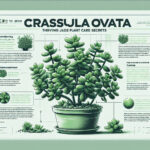Demystifying the Propagation of Crassula Ovata
Stepping into the world of Crassula ovata, commonly known as the Jade Plant, is like discovering a treasure trove of lush green beauty. A favorite among both seasoned gardeners and novices alike, the Jade Plant has earned its popularity through its glossy, gem-like leaves and a reputation for being nearly indestructible. But beyond its aesthetic appeal and low-maintenance allure, lies a realm ripe for exploration—the art and science of propagation.
Why, you might ask, would one dive into the task of propagating this already abundant succulent? Imagine a scenario where a friend, inspired by the verdant vibrancy of your indoor jungle, longs for a piece of that serenity in their own home. Propagation allows you to share the joy of Crassula ovata, transforming a single plant into a network of thriving clones. It’s about more than just multiplying your plant collection; it’s about cultivating connections and spreading the beauty of nature.
Propagation, simply put, is the process of creating new plants from the parts of existing ones. With Crassula ovata, the process is akin to a magic show, where leaves or stems, seemingly inanimate, spring to life given the right incantations—of sunlight, water, and a touch of time. This botanical marvel isn’t just for show, though; it fills a vital role in the cycle of plant life, ensuring the survival and spread of these resilient succulents.
${‘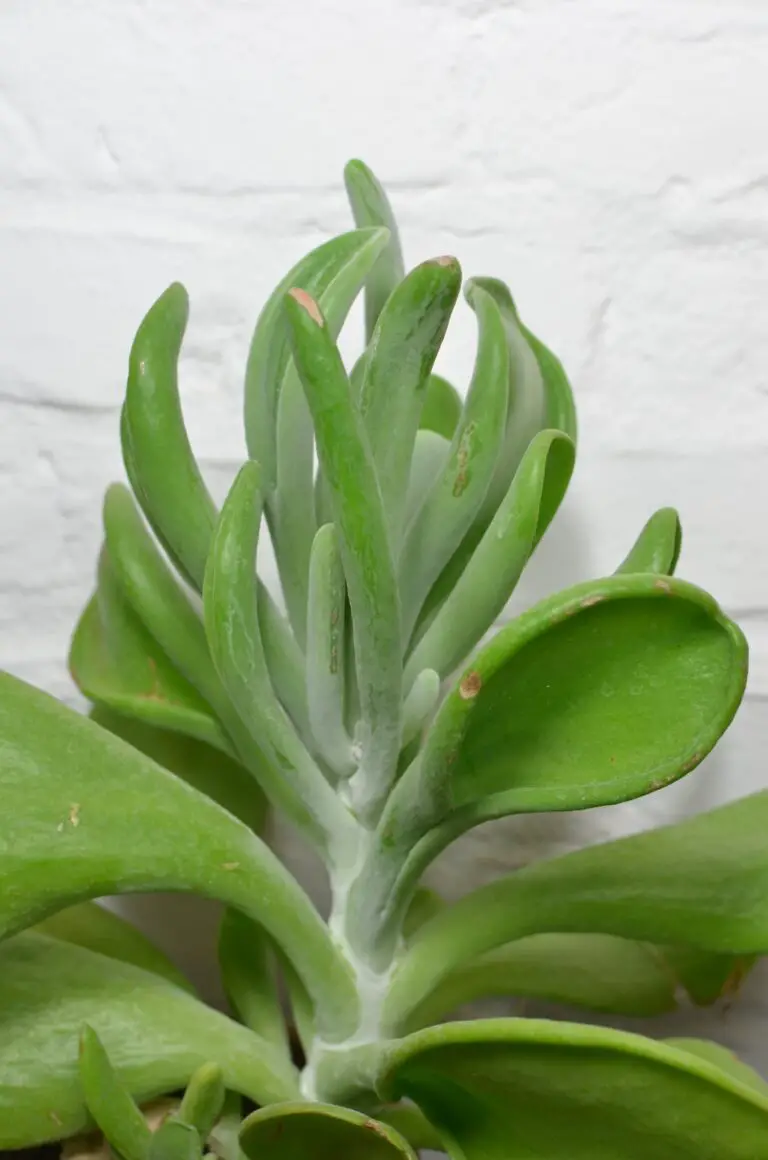 }
}
For those looking to unlock the secrets of successfully propagating the Jade Plant, a wealth of resources is available to guide you through the steps. Whether it’s choosing the perfect leaf for cuttings or ensuring your fledgling succulents receive the ideal balance of elements, tapping into this knowledge can transform your efforts from mere trial and error into a purposeful act of green-thumbed wizardry.
As we delve deeper into the demystification of propagating Crassula ovata, it’s essential to remember that this isn’t just about the mechanics of plant breeding—it’s a celebration of life’s perpetual ability to renew and thrive against the odds. Join us on this journey of discovery, where every snip of a stem or pluck of a leaf is a step towards mastering the wonders of the Jade Plant.
Cloning Your Crassula: Leaf vs. Stem Cuttings
When it comes to propagating your beloved Crassula ovata, you’re essentially signing up for the role of a plant matchmaker. It’s a tender experience, like setting up two friends on a perfect date, hoping sparks will ignite new life. The methods? Leaf cuttings and stem cuttings. But before you play cupid, let’s break down the nitty-gritty of each tactic, sharing secrets from seasoned green thumbs!
Leaf Cuttings: Imagine a single leaf, seemingly unassuming, yet holding the potential to create a whole new plant. It’s Mother Nature’s version of starting from scratch. All it takes is a healthy leaf – plucked with care – and a touch of patience. Picture this: you lay the leaf on well-draining soil and give it just enough water to whisper “grow,” but not enough to drown the tender beginnings of root formation. In weeks, roots and tiny shoots start to appear, forging the path to a new jade plant. It’s a slower method, akin to watching paint dry, but with a much more rewarding finish.
Now with Stem Cuttings: you’re slicing a snippet of the plant’s stem—cut at an angle for maximum water absorption and rooting potential—and replunging that piece into a cozy bed of succulent mix. Keep the faith, because after a period of seemingly doing nothing, those cuttings will embark on a profound journey. They’ll establish roots and potentially grow faster than leaf cuttings, racing ahead with youthful vigor.
While leaf cuttings are the minimalist’s dream, requiring less real estate, stem cuttings are the real estate developers of plant propagation. They’re building complex root structures deep within the soil, promising a sturdier, fuller plant. It’s the difference between renting an apartment and buying a house. Both have merits; it’s just a matter of investing time and space in what works best for your green sanctuary.
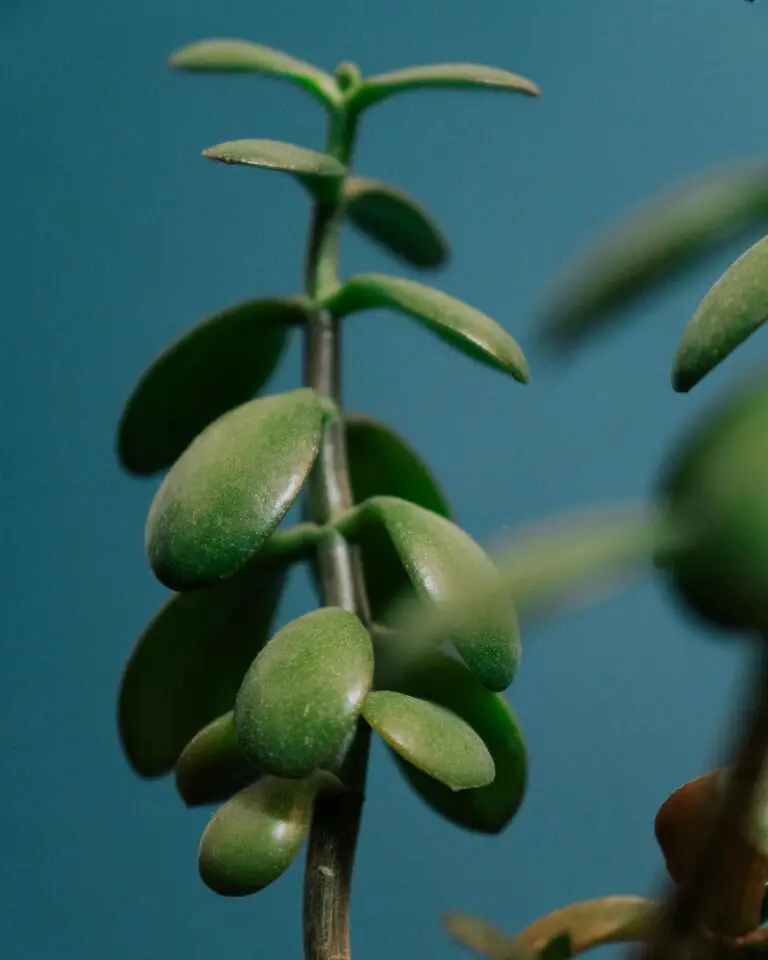
But remember, every lead actor needs a strong supporting cast. Understanding the care for Crassula ovata is vital to successful propagation, from sprout to full-grown splendor. Be it from a leaf or stem, your journey with these succulent babies spirals into a rewarding adventure, growing not just new plants but also one’s patience and nurturing skills in the art of plant rearing.
Engage in this green alchemy with enthusiasm; turn single leaves and stem cuttings into lush, jade canopies. It’s not simply about gardening; it’s a foray into botanical wizardry where you hold the wand to breathe life into these earthly treasures. So, whether you’re creating a battalion of tiny green soldiers from leaves or championing stems to become the next jade giants, let the propagation play begin!
Preparation for Propagation: Tools and Timing
For the burgeoning botanists yearning to multiply their collection of jade plants, known botanically as Crassula ovata, the success of propagation hinges on timing and the correct set of tools. It’s akin to preparing a gourmet meal; ingredients must be fresh, timing impeccable, and utensils pristine!
While many may muse that these succulents can be propagated at any open window of time, the savvy gardener knows better. The ideal period is during the warmer months, when vibrant growth is more than a wishful thought—it’s a guarantee. Imagine this: each cutting or leaf embracing life, much like a butterfly emerging in spring.
The tools of the trade are not to be overlooked either. Every propagator worth their salt should have clean and sharp instruments. It’s elementary—clean cuts heal faster and are less prone to infections. Think of it as a surgical procedure for your plant, where precision is vital, and the sterility of a scalpel is non-negotiable.
In the world of jade propagation, a demonstration speaks volumes. Lo and behold, the visual guide for those who prefer to learn by watching:
Let’s not forget that this is not just about propagation—it’s about creating those personal oases, those pockets of green serenity in our homes. For more tips on crafting lush, verdant gardens that provide refuge from the whirlwind of daily life, be sure to explore our extended repository of gardening wisdom.
Now, armed with this knowledge and your trusty cutlery—ahem, I mean garden tools—prepare to transform that lone Crassula ovata into an entire battalion of jade sentinels, standing guard on your windowsill.
Step-by-Step: Rooting Your Jade Plant Properly
So you want to dive into the world of succulents by propagating your own Crassula ovata, commonly known as Jade Plant? You’re in for a treat! Propagation sounds fancy, but it’s just the horticultural process of creating new plants from the one you already cherish. Here’s the scoop on how to multiply your succulent collection with confidence.
Choose Your Champion
First off, identify a healthy, robust stem or leaf from your existing Jade Plant. It’s like picking an MVP player—select the one that looks most likely to score! A good rule of thumb is to choose a stem that’s plump, green, and free of any damage or disease. Think of it as cloning your best player to form an unbeatable team!
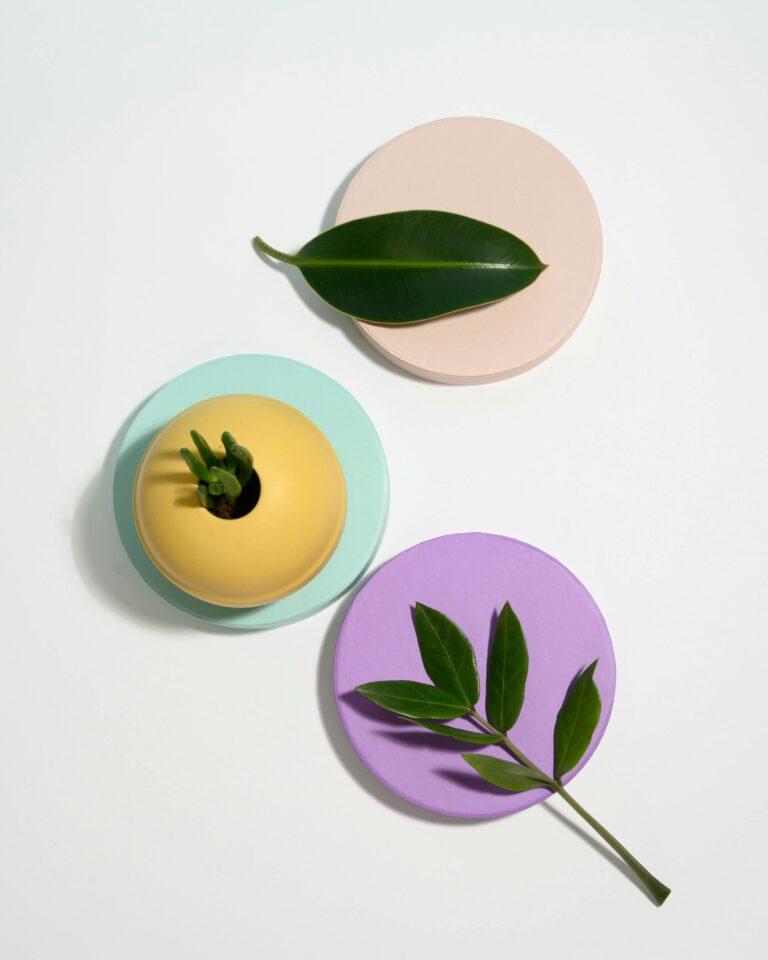
Make the Cut
Once you’ve spotlighted the winner, it’s time to take a cutting. Use a clean, sharp pair of scissors or a knife to make a precise cut. Imagine you’re a surgeon in the operating room—precision is key! After the cut, allow the cutting to callous over for a few days. It’s a little like letting a wound scab over before risking a swim in the ocean.
Set the Stage with Soil
Your next step is to prepare the perfect environment—think of it as setting the stage for a star performance. Use a well-draining potting mix, typically one that’s formulated for succulents or cacti. It’s all about providing the right foundation, much like ensuring a gymnast has the right mat to land on.
Moisture Mastery
When it comes to moisture, think of Goldilocks—not too wet, not too dry, but just right. You want to maintain a level of moisture that’s akin to a sponge that’s been wrung out. Keeping the soil overly saturated is like giving your plant a non-stop drinking challenge, which is a big no-no! Instead, opt for a watering regime that supports healthy root development without waterlogging your aspiring Jade Plant.
Location, Location, Location
Find your cutting a home where it can bask in bright, indirect sunlight. Too much direct sun might be overwhelming, like thrusting a shy person into the spotlight. But a nice, well-lit corner? That’s like a cozy reading nook that encourages growth.
If you’re curious about establishing the ideal conditions for your other succulents, be sure to check out tips for a thriving succulent haven that will turn your green friends into the envy of the neighborhood.
Roll up your sleeves and get ready for some plant parenting—your Jade Plant is counting on you! With these steps and a little patience, you’ll watch tiny replicas of your original plant emerge, ready to adorn your space with their serene beauty. Remember, every big, lush Jade Plant you admire started as someone’s tiny cutting. Yours could be next!
Caring for Your Newly Propagated Crassula Babies
Once you’ve successfully coaxed your crassula ovata cuttings to sprout roots, you’ll enter the gratifying phase of nurturing these tender little plantlets. The journey from propagation to robust jade plants is both fascinating and rewarding—if you know the care essentials!
First things first: Watering your jade plant babies is a delicate balance. They need moisture to develop but loathe being waterlogged. The goal is to keep the soil slightly moist but never soggy. Imagine you’re making the perfect cup of tea—only a few drops at just the right moments. It’s a thirst quench can you propagate crassula ovata enthusiasts get just right with practice!
${‘ }
}
As these baby succulents begin to anchor, they send a silent cheer for their upcoming milestone—the transplant. However, timing is essential. You wouldn’t rush a toddler to run a marathon; similarly, transplant your crassula offspring only when the roots are robust enough to handle the move. This is often when they’re several inches tall and display genuine vigor.
The Art of Transition: Ensuring a Smooth Move
Transplanting is like moving to a new home. Your young crassula needs to adapt to more spacious surroundings gradually. Ease them into the transition by choosing a pot that’s just a size up from their nursery container, providing enough room to grow without overwhelming their limited root system.
Finally, the true test of growing a crassula ovata from propagation to a full-fledged plant is ensuring they develop well. Like nurturing a young athlete, it’s about giving consistent care—adequate sunlight, the right watering schedule, and periodic feeding with a balanced fertilizer will set them on the path to becoming healthy, robust plants that are the envy of any plant parent.
So, while the propagation might seem like the pinnacle of excitement, it’s in these post-propagation days that your green thumb is truly tested. Your patience and attentiveness will reward you with lush, jade-green crassula ovata that stand as a testament to your plant-raising prowess!
Troubleshooting Common Propagation Pitfalls
Embarking on a journey of propagating your Crassula ovata, or Jade Plant, can bring a great sense of fulfillment. Yet, sometimes, even the most attentive gardeners can face hurdles. Fret not, as we dive into the solutions to common issues that might dampen your propagation efforts.
Rotting Cuttings: A Sticky Situation
The excitement of planting a new cutting can quickly sour when it turns mushy and sickly. But why does this happen? More often than not, it’s the overenthusiastic watering can that’s to blame. Crassula ovata cuttings need time to callous – a dry, hardened end that prevents infection. Ensure cuttings are left to dry for a few days before planting and resist the urge to water them until roots form. It’s a test of patience, but well worth the wait for healthy root development.
Drying Leaves: Crisp But Not in a Good Way
Another sign of distress is when leaves shrivel and resemble more of a crunchy snack than a luscious plant. This can be a cry for hydration. While the Jade Plant adores the sunshine, it deeply misses its watering routine when forgotten. A steady watering schedule that allows the soil to slightly dry between sessions is key. Remember, it’s all about balance – too much or too little can send your plant into a state of disarray.
Pest Infestations: Uninvited Guests
Now, imagine tiny invaders marching towards your precious cuttings, eyeing them with nefarious intent. Pests like aphids and mealybugs can quickly overrun your Crassula ovata, derailing your propagation aspirations. Combat these critters by isolating affected plants and using a gentle insecticidal soap. In the battle for your Jade Plant’s health, a keen eye and firm action are your best allies.
With these tips at your disposal, you can navigate the ups and downs of propagating Crassula ovata. Remember, a successful propagation is not just about the end result; it’s about the journey and the knowledge gained along the way. Embrace the process, and watch your green thumb prowess flourish along with your plants.

Faster Growth: The Role of Rooting Hormones
When it comes to propagating the robust Crassula ovata, also known as the jade plant, many enthusiasts dive into the process with gusto. But how can we tip the scales towards success? Let’s talk rooting hormones, the secret agents of propagation!
Rooting hormones are like personal trainers for your cuttings—they help pump up the development process, accelerating growth and encouraging robust roots. While not a ‘must-have’ for Crassula ovata propagation, they are the go-to aid for when you want to see faster, more reliable results. Think of them as a propagation insurance policy!
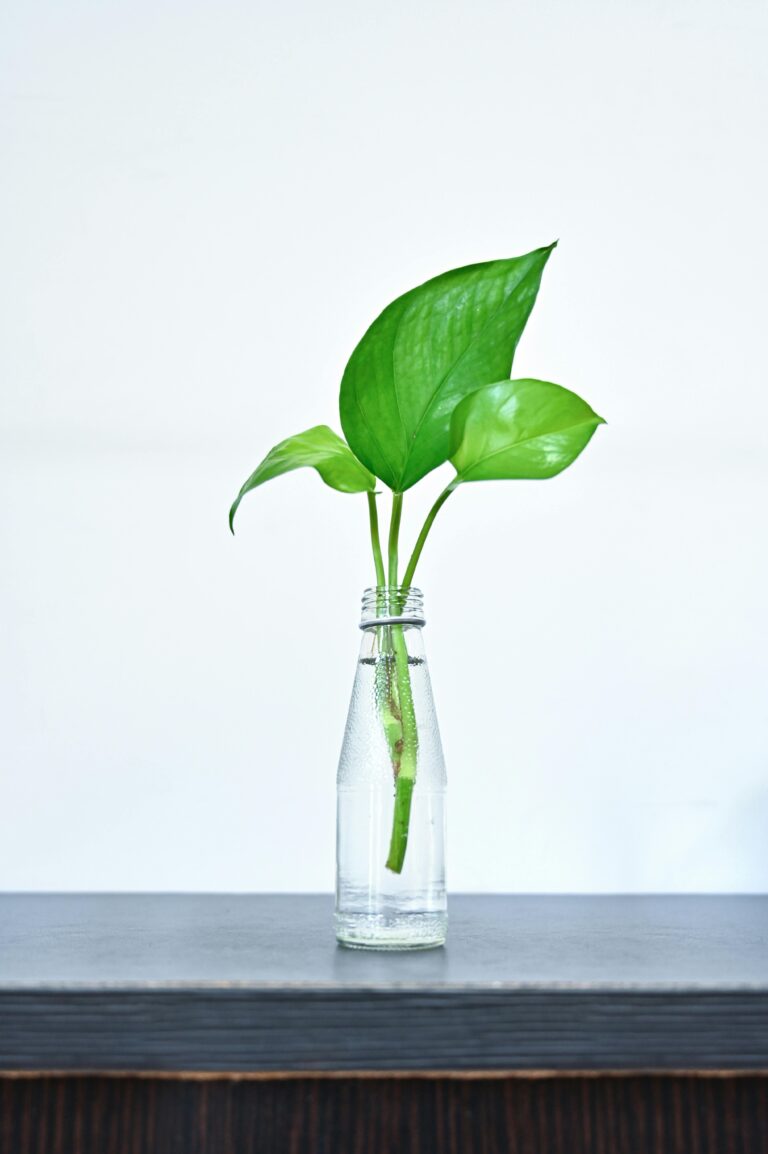
Consider this: without rooting hormones, a cutting may amble along, taking its sweet time to put down roots. It’s like starting a garden with seeds—it’s natural, but requires patience. Now introduce rooting hormones to the mix, and you’re essentially giving your cuttings a growth spurt. It’s like planting seedlings instead of seeds; a quicker route to a lush, green display.
But how do you use these potent potions? It’s as simple as dipping the cut end of your Crassula ovata cutting into a hormone solution or powder. This application can effectively reduce the time it takes for the cutting to transition from ‘just snipped’ to ‘joyously rooted.’
Picture this scenario: your friend has a splendid jade plant, and you’ve been eyeing a piece to start your own. With a carefully snipped cutting and a dab of rooting hormone, you could see roots appearing much sooner than the traditional wait-and-see approach. It’s the difference between wishing for growth and willing it into reality!
Embracing Rooting Hormones for Your Jade Plant Adventure
Embracing rooting hormones in your Crassula ovata propagation pursuit isn’t about taking shortcuts, but rather, ensuring your efforts bear fruit—figurative fruit, that is. Who wouldn’t want a head start in the race towards a full, vibrant jade plant?
In essence, rooting hormones serve as a booster, giving your new plants the kickstart they need to thrive. Whether you’re a seasoned green thumb or a budding plant parent, rooting hormones can be the secret to unlocking the true potential of your propagating adventures with Crassula ovata!
Beyond Cuttings: Propagating Jade Plants from Pups and Seeds
When gardeners think of propagating Crassula ovata, commonly known as the jade plant, they often picture snipping a succulent leaf or stem and celebrating as it takes root. However, there’s more to the propagation tale than this classic cutting practice. Venture beyond the typical and discover how division of pups and seed sowing can contribute to your jade jungle.
The family bonds in jade plants are strong, and they’re not shy about producing offshoots, affectionately known as pups. These little bundles of joy sprout up from the base of a mature jade plant, peeking out like timid toddlers hiding behind their parent. Division of these pups allows you to gently separate them from the mother plant. With the right touch and a bit of tender care, each pup can flourish and grow into a stout, independent jade plant. The joy of watching a pup evolve into a fully-fledged plant makes this method a rewarding adventure.
Untangling the Challenge of Pups
It’s not all smooth sailing, though. Dividing pups from the mother Crassula ovata requires a delicate hand. Envision performing a dance where every step and every turn must be meticulously choreographed—similar finesse is required here. Extracting pups without damaging their tender roots is a task that demands patience and precision; but succeed, and you’ll be gifted with multiple new plants ready to thrive under your care.
Picture this: An enthusiastic gardener, Mariah, took on the challenge with her eyes set on success. Her careful movements and gentle separations resulted in not one but five new jade plants. Identical to their parent in every charming way, these little ones now grace her sunny window sill, a testament to the understated art of pup division.
Seeds of Success: Cultivating Crassula Ovata from Scratch
Now, let’s not overlook the tiny but mighty seeds that bear the potential to grow into mighty jade plants themselves. Sowing seeds is an exciting journey from the smallest granules to glossy green glory. The process, however, is a tale of patience and precision. It’s about creating the ideal nursery environment: a well-draining soil mix, consistent moisture without waterlogging, and that sweet spot of warm but not scorching sunlight.
Germinating jade plant seeds may test your patience, as it can be weeks before you glimpse the first signs of green life breaking through the soil surface. But imagine the thrill of witnessing your Crassula ovata emerge from a speck so small, it could be mistaken for a dot of dust. The potential each seed holds is akin to a botanical lottery—you’re sowing what could become the next centennial marvel of your garden.
The road to propagation victory through seeds may be lengthy, but for those who venture it, the rewards are unparalleled. Just ask Leo, the urban gardener, who turned his balcony into a miniature oasis filled with jade plants of all sizes, all originating from a single packet of seeds. His secret? A mix of childlike wonder and a botanist’s meticulous attention to the needs of his growing green infants.
Whether you choose the path of division or the seed-sowing journey, each offers its unique challenges and benefits. Both require a blend of skill, care, and a dash of luck. But fear not, for the lush foliage and robust growth of the jade plant are worth every calculated move and every patient wait you invest.
Frequently Asked Questions
Embarking on the journey of propagating Crassula ovata, commonly known as the Jade Plant, can be filled with intrigue and excitement. It’s much like unlocking the secrets of a lush, emerald treasure chest! But, just as a seasoned adventurer charts their course, so must a gardener seeking to master the art of propagation. Let’s dig into the most pressing questions that might sprout in your mind.
Can you actually propagate Crassula ovata? Absolutely! It’s not only possible; it’s also a gratifying experience. Picture this: With a few simple snips, a single Jade Plant can give birth to a whole family of succulent siblings. The key to success lies in the precision of your cuttings and the patience to let those tiny new shoots take root.
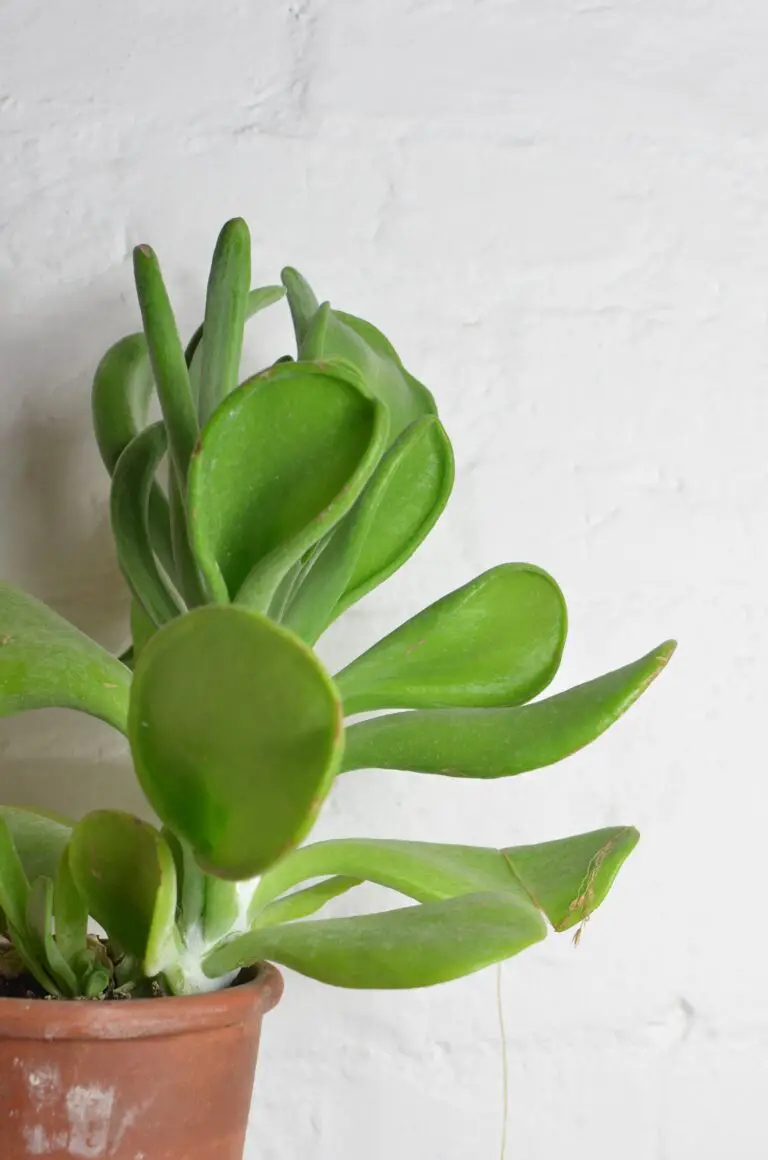
What’s the best season to propagate? Timing is critical. The prime time for propagating your Crassula ovata is during the warmer seasons, when the plant’s growth is more active. Envision those promising shoots reaching out, eager to grasp life in spring or summer’s embrace—it’s nature’s way of saying, “Go forth and multiply!”
Do you need special tools or soil? Not necessarily. The beauty of Crassula ovata lies in its simplicity. You might feel like a botanical blacksmith as you wield nothing more than a pair of clean, sharp scissors and some well-draining soil. This humble setup is your forge where new life begins. Think of it as the minimalist’s approach to a thriving garden.
How long does it take to see new growth? Patience is a virtue, especially in the realm of propagation. Typically, it takes a few weeks to a month before you start seeing the green signs of success. It’s a bit like waiting for your favorite bread to rise in the oven—anticipation is part of the joy!
By now, you can tell that propagating Crassula ovata isn’t shrouded in mystery—it’s all about understanding the plant’s rhythm and responding with care. So roll up your sleeves, arm yourself with knowledge, and prepare to see those green gems flourish under your watchful eye!
